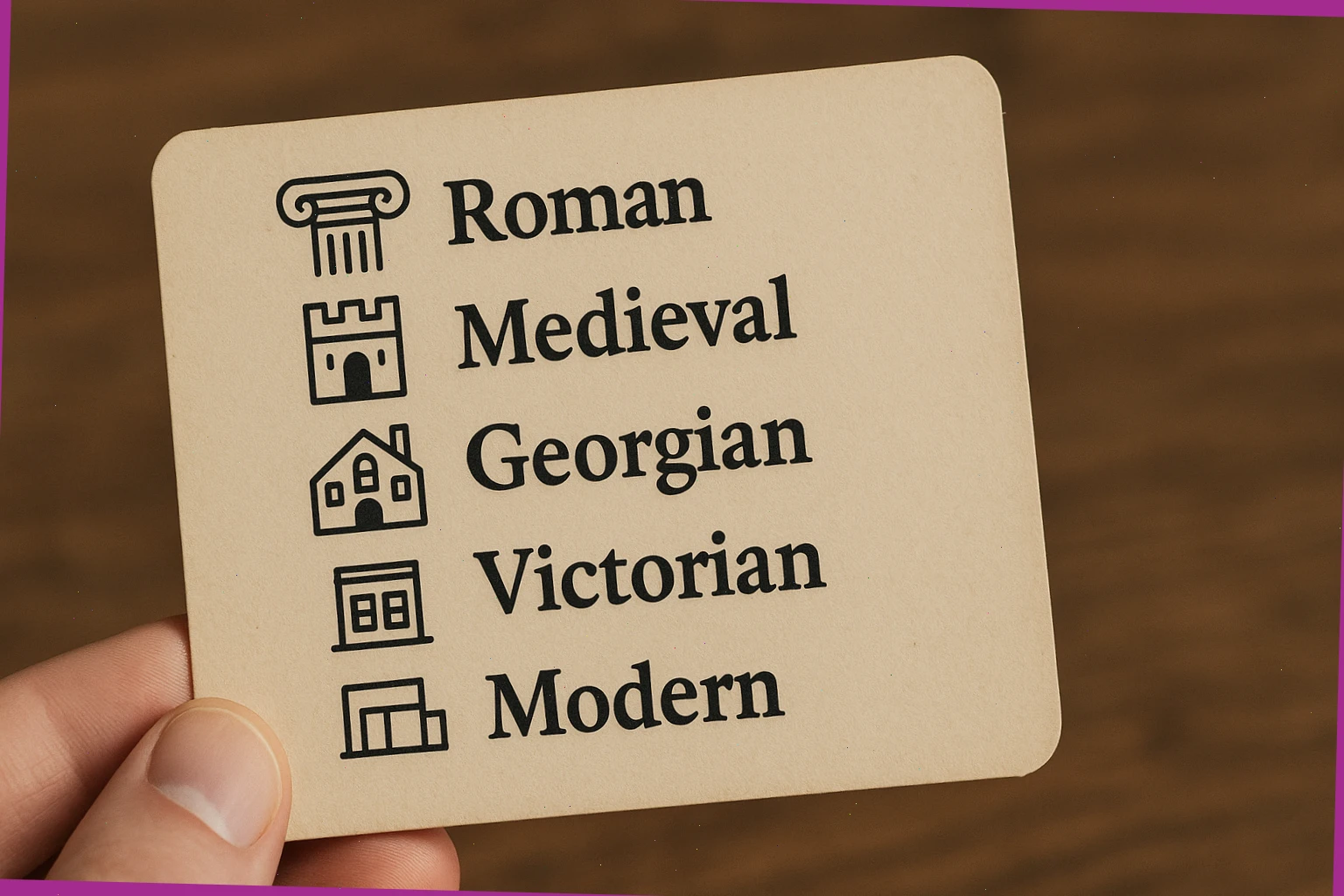Plain Notes for Eras

Reading a city is easier when names are short and cues are visible at street level. The aim of these notes is not to turn every walk into a seminar, but to help you recognise broad layers quickly enough to choose a direction, pause with a view, or step inside a room that adds meaning to the route you are walking.
Roman
When a street suddenly holds a straight line that pays no attention to later lanes, you might be following a Roman alignment. The stones underfoot do not need to be ancient; the stubborn geometry often is. Look for walls made of regular courses with occasional tie-stones; look for gates where the modern road squeezes; look for small museum rooms that hold tile fragments or altars found during repairs. Roman is less about a single building and more about a framework that later centuries kept encountering. A modern shopfront can stand on a Roman armature without saying a word about it. The clue sits in the map: a line that does not bend where everything else does.
Gothic
Pointed arches and vertical pull are not the whole story. Gothic in English cities can be read by how light is managed. Move from a narrow lane into a cathedral close and notice how the building uses height to gather light above the level of the crowd. Look at buttresses that thicken where roofs push outward, at window tracery that becomes more refined near the choir, at doorways worn by centuries of processions. Stone may look dark at a distance, but step to a corner and you will see how carefully edges are worked to guide the eye upward. On a wet day, the damp brings carvings forward; on a bright day, shadow does the work. Gothic asks you to look for load paths and light paths, not just shapes.
Georgian
Georgian brings order back to the street after medieval density. Squares, terraces and polite façades are not only a style; they are a way to regulate light, access and frontage. Brick becomes disciplined, windows line up, and doors carry fanlights that mark status without shouting. In cities with Roman and Gothic cores, Georgian often frames the approach: a measured street leading toward the precinct, a crescent that captures a view, a townhouse that hides a surprisingly deep plan. If Gothic teaches you to look up, Georgian teaches you to count: bays, storeys, the rhythm of chimneys. The pleasure lies in the even breath of the composition.
Victorian and after
Later layers complicate the picture in useful ways. Victorian engineering sits proudly in stations and museums; civic pride arrives in town halls; industry brings brick patterns that are both tough and decorative. Twentieth-century repairs might be quiet or bold. Do not try to resolve every tension between periods. Instead, let each layer describe its problem and answer: how to span, how to light, how to plan a street for new traffic. A city that shows its joins is easier to trust at walking pace.
How to look, not how to label
A label is helpful only if it helps you look again. Roman is a grid that stubbornly persists. Gothic is a system for holding up light. Georgian is order that shapes streets for daily life. Once you have these ideas, you can choose vantage points that do the most work: a gate where alignments cross, a transept corner where buttresses gather, a square where façades repeat with minor variation. Bring the map into the street: trace the line, pick the corner, and stand still for one minute to verify what you thought you saw.
Access and time
Older places often come with steps, narrow doors and mixed surfaces. Most cities publish access notes and offer stewards who know the simpler entries. If you travel with a buggy or prefer fewer steps, read the map alongside the access sheet before you set out. Pacing matters as much as labels, and a good route is one you can actually complete without hurrying. Choosing three strong stops is usually better than chasing ten weak ones.
Why plain notes
Plain notes reduce decision friction. Instead of holding a crowded glossary in your head, you carry three or four cues into the street and let them draw you forward. A pocket card that says “Roman line, Gothic light, Georgian order” is small enough to remember after coffee and steady enough to return to when the square becomes noisy. The goal is not mastery but momentum: a sense that the city can be read at human scale.
Where to test this
Cathedral precincts, museum quarters and castle hills are generous classrooms. They combine layers within a short walk and provide places to rest under cover if the weather turns. Start with one loop that lasts an hour. If energy holds, add a second. If crowds build, pivot to an indoor room and return later. The notes travel well because they are light.
Contact: [email protected] • 441 524 739 864 • 9 Castle Hill, Lancaster LA1 1YN, England.